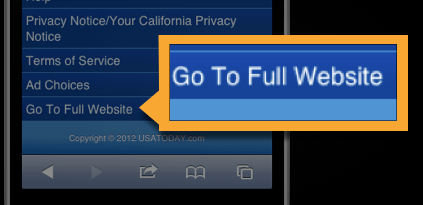Responsive Web Design (RWD) is getting a lot of traction as an easier way for content owners to get their stuff accessible from mobile devices. Being a mobile-old-timer, nothing pleases me more! Most online growth happens on mobile devices these days. We are really talking world domination.
Over the last couple of weeks, I’ve had the pleasure of talking to quite a few people trying out RWD for mobile and this has given both me and them, of course, new insights.
There are many take-aways from such processes, but I’d like to emphasize two: One obvious and one important.
The obvious take-away is that it makes a lot of sense to use RWD techniques to handle different screen sizes by making the page «fluid» so it can scale according to viewport size and arrange content and layout better. Obviously. So, when doing something mobile, use RWD! Another interesting thing in many mobile related RWD projects today is that they start with mobile. Yay! Mobile First. Even more «Yay» is that the teams working on these projects kind of have a hidden agenda and a dream, that they one day will take over the «full web sit» (whatever that is) one day.
That lead me to the important take-away. There is an emerging understanding of what RWD really is. RWD is really more about User Interface (UI) than User Experience (UX). If the dev teams want to take over the «full web» one day, only changing the UI will not fly. This emerging way of thinking web, require a more radical change to User Experience. User Experience includes the User Interface of course, but also affects information architecture, navigation architecture, workflow and so on. Needless to say, a slightly bigger task. Moreover, organizational changes are also required as organizational structure and ownership (and also business goals) have a heavy influence of how content and services is presented to the end user. That is even a bigger task.
I don’t have a receipt on how to get there, but I do know how to see if the goal is reached: There is no «view full web site» link on the mobile site.

